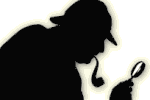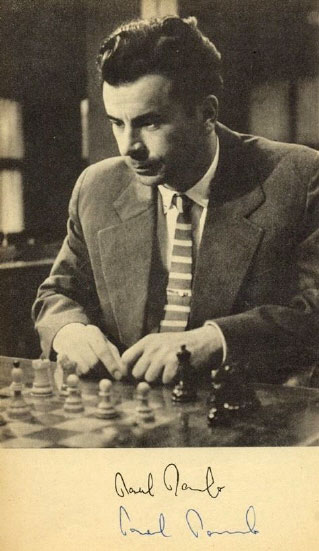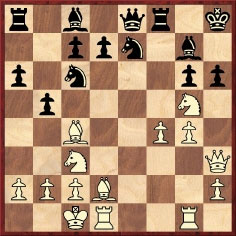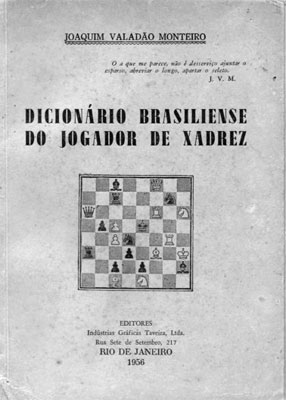


The Benko Gambit and ...b5
Is firm information available about the origins of this opening? C.N. 3957 quoted from page 7 of The Benko Gambit by P. Benko (New York, 1973):
‘It is hardly possible to state precisely who first adopted the gambit. Some Swedish sources mention that it first occurred there in the 1920s and that tournaments especially for the gambit were organized later. The three internationally known masters of Sweden’s past – Ståhlberg, Stoltz and Lundin – also used it, although Ståhlberg found it not to his taste either as White or as Black. Indeed, the Swedish players appear to have used the king’s-side fianchetto, if not the modern order of moves. Of course, the gambit may have occurred elsewhere as well, but it was undoubtedly Lundin who introduced it into international tournament practice. Nevertheless, it later fell into oblivion.
The earliest examples of the gambit in serious competition are the games Bronstein-Lundin [1948], Szabó-Lundin [1948] and Taimanov-Bronstein [1953] ...’
And from page 9 of Benko Counter-Gambit by D. Levy (London, 1978):
‘It is hardly possible to determine exactly when any particular chess opening or variation was played for the very first time, and so it is with the Benko Gambit. It seems most likely that the gambit was born in Sweden during the 1920s and it was the Swedish duo Lundin and Stoltz and the Czech master Opočenský who introduced it in international competition.’
After asking what more was known about such Swedish games of the 1920s we added that Levy’s book (page 100) mentioned a game ‘Ståhlberg-Stoltz, Sweden, 1933’ which began 1 d4 Nf6 2 c4 c5 3 d5 b5 4 cxb5 Bb7. It may be recalled that Rubinstein v Spielmann, Vienna, 1922 opened 1 d4 Nf6 2 Nf3 c5 3 d5 b5 4 c4 Bb7 and that against Tarrasch in the Pistyan tournament earlier the same year Alekhine played, as Black, 1 d4 Nf6 2 Nf3 e6 3 c4 c5 4 d5 b5 (the Blumenfeld Counter-Gambit). Goldstein v Wilson, Hampstead, 1924 opened 1 d4 Nf6 2 c4 e6 3 Nc3 c5 4 d5 b5 (BCM, December 1924, pages 483-484).
Benko’s book (page 1) noted that ‘the usual starting position of the so-called Benko Gambit’ comes after 1 d4 Nf6 2 c4 c5 3 d5 b5 4 cxb5 a6 5 bxa6 Bxa6. See also pages 233-234 of Pal Benko My Life, Games and Compositions by Benko and Jeremy Silman (Los Angeles, 2003).

Pal Benko
In C.N. 3967 Calle Erlandsson (Lund, Sweden) added:
‘In the preface (pages 4-7) to the booklet Volga-gambit by J. Berglund and H. Åkvist (second edition, Stockholm, 1971) there is an historical survey of the opening (1 d4 Nf6 2 c4 c5 3 d5 b5). The following is of particular interest:
“In Sweden the Volga Gambit turned up at the end of the 1920s. According to Fritz Kaijser (Vällingby SS), who over the years has been regarded as the Swedish expert in this area, there was an old teacher of our grandmaster Gösta Stoltz, named Dahlqvist, who started playing the Volga Gambit in Sweden. Not much attention was paid to the variation until [Bruno] Dahlin, a newspaper assistant to the international master Erik Lundin, frequently played the variation during the Stockholm city championship at the end of the 1920s. Whether he, in turn, had obtained the idea from Dahlqvist is not known. Dahlin was not just anybody. His playing strength was so good that he had been Stockholm city champion.
One of Dahlin’s earliest opponents with this opening was Fritz Kaijser himself. Kaijser was curious about the opening and later he introduced it to his colleagues. There were four players who were together and trained at chess: Gideon Ståhlberg, Gösta Stoltz, Stig Lundholm and Kaijser. The training was organized in such a way that thematic tournaments were played. Once there was an idea of making a compilation of the thematic tournaments. Lundholm was the first victim who compiled material on his opening. Kaijser was the next. But harder times came with the Second World War. Chess was not the first priority, so the Volga Gambit, which was Kaijser’s department, was never finished. We therefore never had the chance to see how the ideas developed over the years. According to his own statement, the move 4…a6 did not occur at the outset, but was an improvement by Kaijser.”’
Can any further details be found regarding the origins of the Benko Gambit?
A Krejcik brilliancy
A number Chess Notes items (most recently C.N.s 4490 and 4523) have discussed the following victory by Josef Krejcik (1885-1957):
1 e4 e5 2 d4 exd4 3 Qxd4 Nc6 4 Qe3 g6 5 Bd2 Bg7 6 Nc3 Nge7 7 O-O O-O 8 f4 a6 9 Nf3 f5 10 Bc4+ Kh8 11 Ng5 Qe8 12 exf5 Rxf5 13 g4 Rf8 14 Qh3 h6 15 Rhg1 b5

16 Nxb5 axb5 17 Bc3 h5

18 Rd6 cxd6 19 gxh5 gxh5 20 Bxg7+ Kxg7 21 Nf7+ Ng6 22 Rxg6+ Kxg6 23 f5+ Kf6 24 Qh4+ Kxf5 25 Qg5+ Ke4 26 Nxd6+ Kd4 27 c3 mate.
We published the score on page 169 of the November 1983 CHESS, stating that it had been played between Josef Krejcik and Konrad Krobot in Vienna, 1908. Our source was pages 30-31 of the January 1909 Wiener Schachzeitung, which specified the occasion as follows: ‘gespielt im Café Viktoria, Wien IV, am 14. February 1908’. Subsequently, C.N.s 1214 and 1261 pointed out that when the Wiener Schachzeitung repeated the game on pages 224-229 of its August 1924 issue the date was given as 24 February 1909 (see page 229 of that item – although the date 24 February 1908 appeared on page 227); moreover, on page 35 of his book Mein Abschied vom Schach (Berlin, 1955) Krejcik himself put 24 February 1908. This information was given on pages 48-49 of Kings, Commoners and Knaves. In C.N. 2786 (see page 22 of Chess Facts and Fables) we added that 14 February 1908 was the date supplied on page 100 of Deutsches Wochenschach, 15 March 1908, which took the score from the Neues Wiener Tageblatt. See too page 75 of the 28 February 1909 Deutsches Wochenschach. Krejcik was therefore wrong to put 24 February 1909 on page 16 of another of his books, Artige und unartige Kinder der Schachmuse (Leipzig, 1925). C.N. 2786 also mentioned that when the game was published in the chess column of the Berner Heim on 4 April 1908, with notes from Bohemia, Black’s name was rendered as ‘Krobst’.
Further complications were provided in C.N. 4490 by Richard Forster (Zurich):
‘I can add that Bohemia (Sonntagsbeilage, 8 March 1908, page 27) also had the names as Krejcik and Krobst and stated “gespielt am 14. Feber 1907 in Wien (Café Victoria)”. Perhaps 1907 was a typo, but it adds to the confusion.’
In C.N. 4523 Peter Anderberg (Harmstorf, Germany) wrote:
‘The Krejcik v Krobot game was published on page 15 of Neues Wiener Tagblatt, 28 February 1908, under the heading “Gespielt im Café Veronika, Wien, XVII., am 14. Febr. 1908”. Black’s name was given as “Konrad Krobot”. Krobot, unlike “Krobst”, is a familiar surname in Austria.’
The name of the Café, Veronika, may be noted. Other sources referred to us earlier had Viktoria and Victoria.
For a modern set of annotations, by Bent Larsen, readers are referred to pages 22-23 of Stefan Bücker’s excellent magazine Kaissiber, October-December 2005, but can the basic historical facts about the game be established?

Josef Krejcik
Znosko-Borovsky
In C.N. 5227 Tony French (Worthing, England) asked for biographical information about E. Znosko-Borovsky (1884-1954) beyond what appears in the standard reference works.
Details are surprisingly scarce. An article about him by V. Soultanbéieff on pages 987-988 of the August 1928 issue of L’Echiquier stated that he began chess at an early age and followed Hastings, 1895 closely in the hope that his compatriot Chigorin would win. After completing his studies, in 1904 he engaged in the Russo-Japanese War, where he injured his right hand. He returned to Manchuria in 1905. In the Great War he suffered damage to his legs, and he did not resume chess until arriving in Paris in 1920.
Znosko-Borovsky was described as a man of letters and of the theatre who brought out a significant work in Russian: a treatise on Russian theatre in the early twentieth century. He also wrote a number of plays, the first of which was banned. (‘Znosko-Borowsky écrivit aussi plusieurs pièces de théâtre, dont la première, Le croiseur “Almase” (Tsou-shima), un drame, fut interdit par la censure.’) It was also stated that he was briefly (in 1918-1919) a theatre director.
R.H.S. Stevenson had written along similar lines on pages 172-173 of the May 1921 BCM. Additional information included the following:
‘Volunteering for service in the Russo-Japanese War, he was wounded at the battles of Mukden and Liao-yang, receiving a Commission and the Cross of St George.’
‘In the Great War he fought in the Russian drives which culminated in the capture of Prshmesyl [sic] and Lemburg, being seriously wounded and sent back to Petrograd. After the Revolution he lived in the mountains of Caucasia and ran a very successful theatre there for nine months. He is now in Paris editing Russian newspapers ...’
‘His reputation as a dramatic and literary critic was, at one time, considerable in Europe, though England knew little of this.’
Have readers seen any of Znosko-Borovsky’s writings on subjects other than chess?
Joaquim V. Monteiro
C.N.s 3884, 3887 and 4173 discussed the Brazilian player and writer Joaquim Valladão (occasionally seen as Valadão) Monteiro, and in particular his book Dicionário Brasiliense do Jogador de Xadrez (Rio de Janeiro, 1956). Biographical information is still being sought on him, and on his other chess books, such as Dicionário Brasiliense de Têrmos Enxadrísticos (Rio de Janeiro, 1953).


Morrison v Capablanca
In C.N. 2442 Steve Giddins (Chatham, England) wrote:
‘The London, 1922 tournament book by Maróczy gives the early moves of the game Morrison-Capablanca as follows:
1 d4 Nf6 2 Nf3 e6 3 e3 b6 4 Bd3 Bb7 5 O-O Be7 6 b3 O-O 7 Bb2 Ne4 8 c4 f5 9 Nc3 Qe8 10 Qc2 Nxc3 11 Bxc3 Qh5 12 Qe2 Na6 13 c5 Nb8 14 b4 Bf6 15 Rac1 Nc6 16 e4 Ne7 17 e5 Nd5 18 Bd2 Be7 19 Ne1 Qf7 20 f4 Rab8 21 Bc4 bxc5 22 bxc5 h6 23 Nc2 g5 24 Rb1 gxf4 25 Rb3 Bc6 26 Bxf4

26…Nxf4 27 Rxf4 Kh7 28 Ne3 Bg5, with Black going on to win.
In his notes, Maróczy points out that White could have won a pawn for nothing by 28 Rxf5. I was immediately sceptical of the suggestion that Capablanca made such a crass blunder as 27...Kh7, and so I checked other sources. The Capablanca volume in Wildhagen’s Weltgeschichte des Schachs series gives the above move-order, and its small booklet of annotations also points out the alleged White win. However, the 1959 Russian book on Capablanca by Panov (page 131) gives a different move-order, 26...Kh7 27 Ne3 Nxf4 28 Rxf4 Bg5, etc., which of course precludes the resource pointed out by Maróczy. I am pleased to be able to report that this does indeed appear to be the actual move-order. This is confirmed by the report in The Times on 5 August 1922. The text of Capablanca’s report was reproduced on page 142 of your own book on Capablanca, but in giving the full game-score that day The Times had the move-order quoted by Panov. I therefore feel fairly sure that the tournament book is incorrect and that Morrison did not miss a win by 28 Rxf5.’

John Stuart Morrison
Further to Mr Giddins’ contribution, we noted that from the above diagram there are two versions of how the game went:
Version 1 (Burn’s column in The Field, 19 August 1922, page 271, Maróczy’s tournament book, published in summer 1923, and most subsequent sources): 26…Nxf4 27 Rxf4 Kh7 28 Ne3 Bg5.
Version 2 (The Times, 5 August 1922, page 14, and most other 1922 sources): 26…Kh7 27 Ne3 Nxf4 28 Rxf4 Bg5.
Burn’s general report on page 236 of The Field of 12 August 1922 stated, ‘The Canadian outplayed his opponent in the middlegame, but on the 27th move [emphasis added] he missed a continuation which would probably have given him a won game’, yet the following week it was 28 Ne3 that Burn faulted: ‘White here overlooked that he could have gained a pawn by R takes P, with probably a winning position.’ Moreover, Burn’s annotations were also given on page 135 of the September-October 1922 American Chess Bulletin, even though the game-score used there was Version 2, which meant that Burn’s above-quoted remark at move 28 made no sense.
Then there was Znosko-Borovsky, a participant in the London tournament. In La Stratégie (August 1922, pages 189-191) he used Version 2, but in a later article about Capablanca’s mistakes (Kagans Neueste Schachnachrichten, January-March 1926, page 152) he switched to Version 1. By then the game was gaining notoriety, and in writing the introduction to the New York, 1927 tournament book Alekhine felt able, on page 15, to refer to it as an established example of a major oversight by the Cuban, without offering any particulars.
On the analytical front, concerning Version 1 Reinfeld (The Immortal Games of Capablanca) called 27…Kh7 a serious mistake and said that 27…Bg5 gave a winning attack. The Euwe/Prins book on Capablanca proposed 28 Rxf5 Qg7 29 Rxb8 Rxb8 30 Rf1 Rg8. See also page 132 of Capablanca’s Best Chess Endings by Irving Chernev (whose analysis was disputed by Richard Moody on page 32 of the December 1990 Chess Life).
As regards Version 2, in La Stratégie it was considered that White should have retained the bishop pair through 27 Bd2. On page 201 of the December 1922 Magyar Sakkvilág and page 275 of Bachmann’s Schachjahrbuch 1922 the possibility of 27 Bxh6 was given two exclamation marks, since 27…Kxh6 28 Rh3+ leads to perpetual check. In the June 1923 Wiener Schachzeitung (page 166) N. Grekov recommended 27 Bxd5, followed by 28 Rh3.
So, was it Version 1 or Version 2 that was played, and what are the analytical merits of each line? Only one thing seems clear: Capablanca went on to win in magnificent style after 29 Rxf5 Bxe3+ 30 Qxe3 Qg6 31 Rf2 Bxg2, so that if 32 Rxg2 then 32…Qb1+, etc.
Steinitz v von Bardeleben, Hastings, 1895

Steinitz v von Bardeleben is one of the most famous games in chess history, yet there is no consensus as to how it ended. C.N. 3114, which began with a quote, is reproduced below:
‘But Bardeleben didn’t resign. He stared at 25 Rxh7+, shot a glance at Steinitz, and without a word got up from his chair and left the room. He didn’t come back. Tournament officials searched and found Bardeleben pacing angrily. No, he wouldn’t return to the board so that outrageous Austrian could mate him.
So Steinitz had to wait for Bardeleben’s time to run out before he could claim the win. Not only claim it – he demonstrated the final ten-move mate and the crowd cheered.’
That appeared on pages 67-68 of The Great Chess Tournaments and Their Stories by A. Soltis (Radnor, 1975). Page 110 of the English edition of Kasparov’s first Predecessors book stated (also without specifying any source) that von Bardeleben ‘suddenly stood up and silently walked out of the room (later he sent a note by special delivery tendering his resignation)’.

Curt von Bardeleben
The game was played in round ten, on 17 August. ‘The weather is very hot’, noted Horace F. Cheshire’s tournament book (page 156). Publications of the time gave no impression that a scandal of any significance had occurred. The Chess Monthly (September 1895, page 12) merely noted that the game had been von Bardeleben’s first loss, ‘and he got so despondent in consequence that without serious pressure he would have retired from the contest’. The BCM (October 1895, page 412) described him as:
‘a very reserved gentleman, with somewhat wearied look, probably from ill-health, fragile figure, suggestive of highly strung nervous temperament, with hat upon head – he generally wore it – in his favourite attitude, right elbow upon the table and hand supporting his face on that side.’
The BCM’s annotations (December 1895 issue, page 529) were by C.E. Ranken and made no mention of any incident. An account of how the game ended was, however, included in the annotations by W.H.K. Pollock, who had been a participant in the tournament, on pages 298-300 of La Stratégie, 15 October 1895. As it has not yet been established where the original English version appeared we quote the French translation after the move 25 Rxh7+:
‘La partie a été terminée ici, M. de Bardeleben s’est retiré sans abandonner et la partie a été adjugée à M. Steinitz à l’expiration du temps limité. M. de Bardeleben a dit à son adversaire que sa conduite était pour protester contre les applaudissements souvent trop prolongés dont les visiteurs saluaient les victorieux et c’est à la suite de cet incident que le Comité du tournoi a défendu toute démonstration.’
In short, von Bardeleben left the hall without resigning and allowed his time to run out because of the disturbance caused by spectators applauding winners of games, and he informed Steinitz personally of this. The above-mentioned tournament book confirms the remark by Pollock that von Bardeleben’s grievance was acted upon promptly, for regarding the next round of play the book reported (page 171):
‘On this day also the Committee, finding that applause, even if slight, was liable to be misunderstood by our foreign competitors, and in any case was annoying to the players, put up a notice asking visitors to refrain, and the directors of play and stewards had strict instructions to enforce the notice.’
C.N. 3117 reported that Roger Bristow, the Information Services Librarian at Hastings Library, had kindly examined six local newspapers (all weekly publications), in each case checking through the first issue following the date of the game, i.e. 17 August 1895. Mr Bristow commented:
‘There is nothing about the circumstances in which this game ended. Two of the newspapers reprint (from the Daily News) a report of the game, simply recording the moves, with occasional commentary. But no particular comment is made about von Bardeleben’s resignation, and there is no mention of his walking out at all.’
The Wallace Murder Case

It has been possible to expand substantially our feature article Chess and the Wallace Murder Case, but no progress has yet been made on, in particular, alleged connections between Wallace and masters such as Blackburne, Capablanca and Kashdan.
Submit information or suggestions on chess mysteries
 Edward
Winter is the editor of Chess
Notes, which was founded in January 1982 as "a forum for aficionados
to discuss all matters relating to the Royal Pastime". Since then around
5,300 items have been published, and the series has resulted in four books by
Winter: Chess
Explorations (1996), Kings,
Commoners and Knaves (1999), A
Chess Omnibus (2003) and Chess
Facts and Fables (2006). He is also the author of a monograph
on Capablanca (1989).
Edward
Winter is the editor of Chess
Notes, which was founded in January 1982 as "a forum for aficionados
to discuss all matters relating to the Royal Pastime". Since then around
5,300 items have been published, and the series has resulted in four books by
Winter: Chess
Explorations (1996), Kings,
Commoners and Knaves (1999), A
Chess Omnibus (2003) and Chess
Facts and Fables (2006). He is also the author of a monograph
on Capablanca (1989).
Chess Notes is well known for its historical research, and anyone browsing in its archives will find a wealth of unknown games, accounts of historical mysteries, quotes and quips, and other material of every kind imaginable. Correspondents from around the world contribute items, and they include not only "ordinary readers" but also some eminent historians – and, indeed, some eminent masters. Chess Notes is located at the Chess History Center.